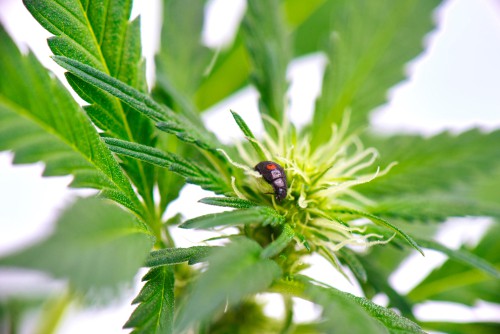Black spots on marijuana leaves can be a cause for concern for growers. These spots can indicate a variety of issues, from nutrient deficiencies to pests or diseases. It’s important to address the problem quickly to prevent it from worsening and potentially damaging the entire crop.
Understanding the causes of black spots on marijuana leaves is the first step in identifying and treating the issue. Nutrient deficiencies, such as nitrogen or magnesium, can cause black spots to appear.
Pests, such as spider mites or thrips, can also cause damage to the leaves, resulting in black spots. Diseases, such as powdery mildew or bud rot, can also lead to the appearance of black spots on the leaves.
Identifying the cause of the black spots is crucial in determining the appropriate treatment. Depending on the cause, growers may need to adjust their nutrient regimen, implement pest control measures, or use fungicides to combat diseases.
Prevention and maintenance, such as maintaining proper pH levels and optimizing the growing environment, can also help prevent black spots from appearing in the first place.
Check out these posts:
Understanding Black Spots on Marijuana Leaves
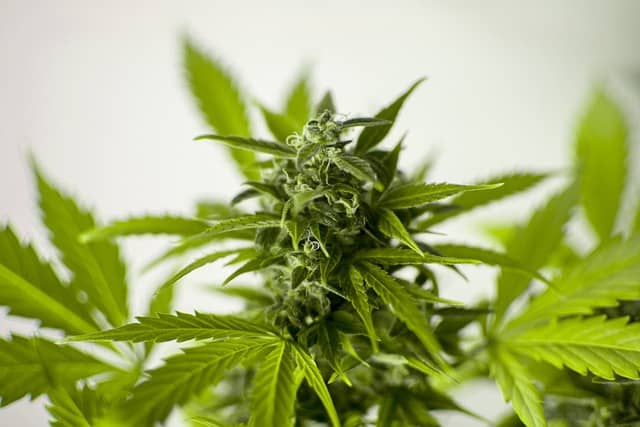
Black spots on marijuana leaves are a common sight for many growers. They can be caused by a variety of factors, including diseases, pests, and nutrient deficiencies. Identifying the cause of the black spots is important in order to treat the problem effectively.
One of the most common causes of black spots on marijuana leaves is a fungal disease called leaf spot. Leaf spot is caused by a variety of fungi and can be identified by the circular or irregular-shaped spots that appear on the leaves.
These spots can be black, brown, or yellow in color and may have a yellow halo around them. Leaf spot can be treated with fungicides, but prevention is the best course of action. Good hygiene practices, such as keeping the grow area clean and well-ventilated, can help prevent leaf spot.
Another cause of black spots on marijuana leaves is nutrient deficiencies. Calcium and magnesium deficiencies can cause black spots to appear on the leaves.
Calcium is important for strong cell wall structure and healthy growth patterns, while magnesium is essential for photosynthesis. Providing the plant with a balanced nutrient solution can help prevent nutrient deficiencies and the resulting black spots.
Pests, such as spider mites and thrips, can also cause black spots on marijuana leaves. These pests feed on the plant’s leaves, causing damage that can appear as black spots. Treating the plant with insecticides or using natural pest control methods can help control the pest population and prevent further damage.
In conclusion, black spots on marijuana leaves can be caused by a variety of factors, including diseases, nutrient deficiencies, and pests. Identifying the cause of the black spots is important in order to treat the problem effectively.
Good hygiene practices, balanced nutrient solutions, and pest control methods can help prevent black spots from appearing on marijuana leaves.
Black Spots on Marijuana Leaves – 5 Common Problems
Black spots on marijuana leaves are a common problem for growers. These spots can be caused by a variety of factors, including nutrient deficiencies, pests, diseases, and environmental stresses. In this section, we will explore the most common causes of black spots on marijuana leaves.
1. Nutrient Deficiencies
One of the most common causes of black spots on marijuana leaves is nutrient deficiencies. When a plant is not getting enough of a particular nutrient, it can develop black spots on its leaves. The most common nutrient deficiencies that can cause black spots are nitrogen, potassium, and calcium deficiencies.
2. Pests
Pests such as spider mites and thrips can also cause black spots on marijuana leaves. These pests can damage the plant’s leaves, causing them to develop black spots. Additionally, pests can carry diseases that can cause black spots on the leaves.
3. Diseases
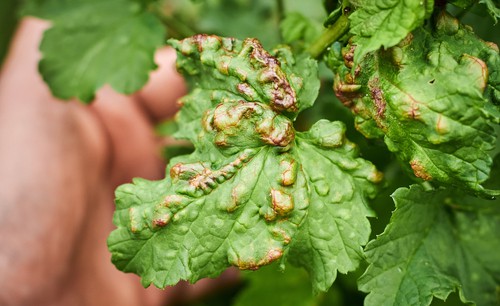
Fungal infections, such as black spot fungus and leaf septoria, can also cause black spots on marijuana leaves. These diseases can be caused by a variety of factors, including poor airflow, high humidity, and debris buildup.
4. Environmental Stresses
Environmental stresses such as heat stress, nutrient burn, and light burn can also cause black spots on marijuana leaves. These stresses can cause the plant’s leaves to become necrotic, resulting in black spots.
5. Prevention
Preventing black spots on marijuana leaves requires diligence and maintenance. Growers should ensure that their plants are receiving the proper nutrients, have adequate airflow, and are not being stressed by environmental factors.
Additionally, growers should regularly inspect their plants for pests and diseases and take appropriate action if necessary. Using organic nutrients, such as neem oil or ladybugs, can also help prevent black spots on marijuana leaves.
Finally, flushing the plant with bicarbonate of soda can help prevent nutrient lockout and other issues that can cause black spots.
Identifying and Treating Nutrient Deficiencies
Marijuana plants are susceptible to nutrient deficiencies, which can cause black spots on leaves, among other symptoms. Identifying and treating nutrient deficiencies in a timely manner is crucial to ensure healthy plant growth and maximize yield.
1. Common Nutrient Deficiencies
There are several nutrient deficiencies that can cause black spots on marijuana leaves. The most common ones are:
- Nitrogen Deficiency: This is one of the most common nutrient deficiencies in marijuana plants. It can cause yellowing of leaves, stunted growth, and black spots on lower leaves. Nitrogen is essential for plant growth and is required in large amounts during the vegetative stage.
- Calcium Deficiency: Calcium is important for cell wall development and helps prevent diseases. A calcium deficiency can cause black spots on leaves, as well as stunted growth and weak stems.
- Magnesium Deficiency: Magnesium is essential for chlorophyll production and helps regulate nutrient uptake. A magnesium deficiency can cause yellowing of leaves, as well as black spots on older leaves.
- Potassium Deficiency: Potassium is important for root development and helps regulate water uptake. A potassium deficiency can cause yellowing of leaves, as well as black spots on lower leaves.
- Iron Deficiency: Iron is important for chlorophyll production and helps regulate pH levels. An iron deficiency can cause yellowing of leaves with green veins, as well as black spots on leaves.
- Phosphorus Deficiency: Phosphorus is important for root development and helps regulate energy transfer. A phosphorus deficiency can cause stunted growth, weak stems, and black spots on lower leaves.
- Manganese Deficiency: Manganese is important for chlorophyll production and helps regulate enzyme activity. A manganese deficiency can cause yellowing of leaves, as well as black spots on older leaves.
- Zinc Deficiency: Zinc is important for enzyme activity and helps regulate nutrient uptake. A zinc deficiency can cause stunted growth, weak stems, and black spots on lower leaves.
- Sulfur Deficiency: Sulfur is important for protein synthesis and helps regulate pH levels. A sulfur deficiency can cause yellowing of leaves, as well as black spots on older leaves.
2. Treating Nutrient Deficiencies
Treating nutrient deficiencies involves identifying the specific nutrient that is lacking and providing the plant with the appropriate amount of that nutrient.
This can be done by adjusting the pH level of the soil or hydroponic solution, using a nutrient solution that is specifically formulated for the deficient nutrient, or applying a foliar spray that contains the deficient nutrient.
It is important to note that over-fertilization can also cause black spots on leaves, so it is important to follow the recommended dosage of nutrients and monitor the plant for any signs of toxicity, such as burnt tips or edges.
In conclusion, identifying and treating nutrient deficiencies is a crucial aspect of marijuana cultivation. Black spots on leaves can be a sign of several nutrient deficiencies, including nitrogen, calcium, magnesium, potassium, iron, phosphorus, manganese, zinc, and sulfur deficiencies.
Treating nutrient deficiencies involves providing the plant with the appropriate amount of the deficient nutrient, while avoiding over-fertilization.
Dealing with Pests and Diseases
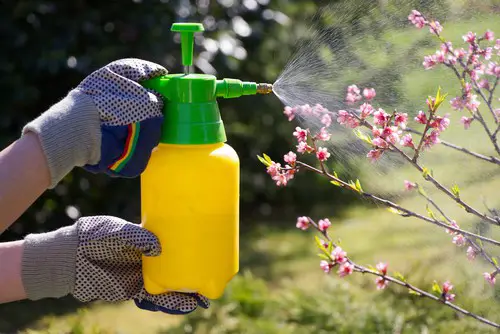
Pests and diseases are common problems that marijuana growers face. One of the most common diseases that can affect marijuana plants is black spot fungus. This disease causes black spots to appear on the leaves of the plant, which can eventually lead to the death of the plant if left untreated.
Another common pest that can cause problems for marijuana growers is spider mites. These tiny pests can quickly infest a plant and cause damage to the leaves and buds. If left untreated, spider mites can cause significant damage to the plant, leading to reduced yields and poor quality buds.
To deal with pests and diseases, it is important to take a proactive approach. This includes keeping a close eye on the plants and checking them regularly for any signs of problems. If any issues are detected, it is important to take action quickly to prevent the problem from worsening.
One way to prevent pests and diseases from affecting marijuana plants is to use fungicides. These products can help prevent the growth of mold and other fungal infections, which can be particularly problematic for indoor growers.
Another way to prevent pests and diseases is to maintain a clean and healthy growing environment. This includes keeping the grow room clean and free of debris, as well as ensuring that the plants are receiving the right amount of nutrients and water.
In addition to taking preventative measures, it is also important to be prepared to deal with pests and diseases if they do occur. This may involve using natural remedies or chemical treatments, depending on the severity of the problem.
Overall, dealing with pests and diseases is an important part of growing healthy and high-quality marijuana plants. By taking a proactive approach and staying vigilant, growers can help prevent problems from occurring and ensure that their plants remain healthy and productive.
Prevention and Maintenance
Prevention and maintenance are key to keeping black spots off marijuana leaves. Diligence is important in identifying and addressing the underlying causes of black spots. Here are some preventative measures and maintenance tips to keep your plants healthy:
1. Soil and Water
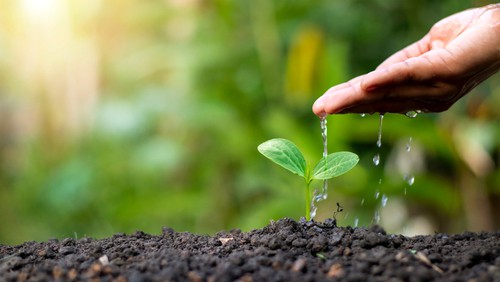
Maintaining pH and EC levels in the soil is crucial for the overall health of the plant. Tap water can contain high levels of minerals that can affect the pH and EC levels of the soil.
Hard water can also leave mineral deposits, which can lead to nutrient imbalances and black spots. Flushing the soil periodically can help remove these mineral deposits.
Overwatering can also cause black spots on marijuana leaves. Proper drainage and airflow are important to prevent waterlogging. Using organic soil can help retain moisture and promote healthy growth.
2. Airflow and Pruning
Good airflow is important for preventing black spots caused by fungal infections. Proper ventilation in the grow room can help prevent the buildup of moisture and humidity. Pruning can also help promote airflow and prevent overcrowding, which can lead to fungal infections.
3. Neem Oil and Horticultural Soap
Neem oil is a natural insecticide and fungicide that can help prevent black spots caused by pests and fungal infections. Horticultural soap can also help control pests and fungal infections. It is important to follow the instructions for application and use caution when applying any chemicals to the plant.
4. Crop Rotation
Crop rotation can help prevent the buildup of pests and diseases in the soil. Planting different crops in the same soil can help break the life cycle of pests and prevent the buildup of pathogens.
5. Photosynthesis
Proper photosynthesis is important for preventing black spots caused by nutrient deficiencies. Providing adequate light and nutrients can help promote healthy photosynthesis and prevent nutrient imbalances.
6. Diligence
Regular inspection and maintenance are important for preventing and addressing black spots on marijuana leaves. Early detection and treatment can help prevent the spread of pests and diseases and promote healthy growth.
Using horticultural oil or soap can help control pests and fungal infections, but it is important to follow the instructions for application and use caution when applying any chemicals to the plant.
Understanding the Growth Cycle of Cannabis
Growing cannabis is a complex process that requires careful attention to the plant’s growth cycle. Understanding the growth cycle of cannabis is essential for new growers to ensure their plants grow healthy and produce high-quality buds.
The growth cycle of cannabis can be divided into four stages: Germination, Seedling, Vegetative, and Flowering.
1. Germination
The first stage of the growth cycle is germination. During this stage, the seed sprouts and begins to grow roots and leaves. Germination can take anywhere from 3 to 10 days, and it’s important to keep the soil moist during this time. Once the seed has sprouted, it’s time to move to the next stage.
2. Seedling
The second stage of the growth cycle is the seedling stage. During this stage, the plant begins to grow its first true leaves and develops a stronger root system. The seedling stage typically lasts for 2 to 3 weeks, and it’s important to provide the plant with plenty of light and nutrients during this time to ensure healthy growth.
3. Vegetative
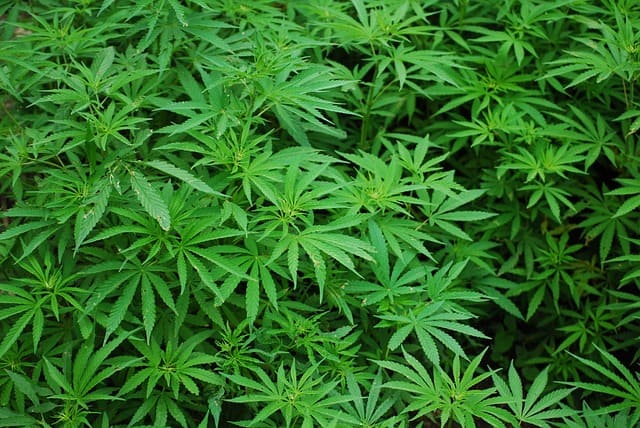
The third stage of the growth cycle is the vegetative stage. During this stage, the plant grows rapidly and develops more leaves and branches. The vegetative stage can last anywhere from 3 to 16 weeks, depending on the strain and growing conditions.
It’s important to provide the plant with plenty of light and nutrients during this stage to ensure healthy growth and prevent stunted growth.
4. Flowering
The fourth and final stage of the growth cycle is the flowering stage. During this stage, the plant begins to produce buds and develops a strong aroma. The flowering stage can last anywhere from 8 to 11 weeks, depending on the strain and growing conditions.
It’s important to provide the plant with the right light and nutrients during this stage to ensure healthy bud development and prevent nutrient burn.
In conclusion, understanding the growth cycle of cannabis is essential for new growers to ensure their plants grow healthy and produce high-quality buds. By providing the plant with the right light, nutrients, and growing conditions during each stage of the growth cycle, growers can ensure their plants reach their full potential.
Optimizing the Growing Environment
To prevent black spots on marijuana leaves, it is essential to optimize the growing environment. This includes controlling the temperature, humidity, airflow, and light exposure.
Temperature plays a vital role in plant growth and development. The ideal temperature range for cannabis plants is between 70-85°F during the day and 58-70°F at night. Temperatures above or below this range can cause stress to the plant, leading to black spots on the leaves.
Humidity levels should also be monitored closely. High humidity levels can cause excess moisture to build up on the leaves, creating the perfect environment for mold and mildew to grow. On the other hand, low humidity levels can cause the leaves to dry out and become brittle.
The optimal humidity range for cannabis plants is between 40-60%.
Airflow is crucial for preventing the buildup of excess moisture and maintaining a healthy growing environment. Proper ventilation and air circulation can help prevent black spots on the leaves by reducing humidity levels and preventing mold growth.
Grow lights are also an essential factor in optimizing the growing environment. The type of grow light used, as well as the duration and intensity of light exposure, can affect plant growth and development. It is recommended to use LED grow lights, as they provide a full spectrum of light and emit less heat than other types of grow lights.
The grow room should also be kept clean and free of debris and pests. Regular cleaning and maintenance can help prevent the buildup of mold, mildew, and other harmful pathogens that can cause black spots on the leaves.
Finally, it is important to remember that cannabis plants require a specific balance of nutrients and minerals for healthy growth and development. Spring is an excellent time to fertilize the plants and ensure they have the necessary nutrients for photosynthesis.
By optimizing the growing environment, cannabis growers can prevent black spots on the leaves and promote healthy plant growth and development.
Frequently Asked Questions
Why are my marijuana leaves turning brown and curling?
Brown and curling leaves on a marijuana plant can be a sign of nutrient deficiency, overwatering, or pests. One common nutrient deficiency that can cause brown spots is a lack of calcium.
Overwatering can also cause the roots to rot, leading to brown and curling leaves. Pests such as spider mites and thrips can also cause damage to the leaves, resulting in brown spots and curling.
What causes deformed leaves to grow on marijuana plants?
Deformed leaves on a marijuana plant can be caused by a variety of factors, including nutrient deficiencies, pests, and genetics. For example, a calcium deficiency can cause leaves to become twisted and deformed.
Spider mites and thrips can also cause damage to the leaves, resulting in deformities. In some cases, genetics can also play a role in the growth of deformed leaves.
How do I treat black spots on my marijuana leaves?
The treatment for black spots on marijuana leaves will depend on the underlying cause. If the spots are caused by a nutrient deficiency, such as a lack of calcium, then adding a calcium supplement to the soil can help.
If the spots are caused by pests, such as spider mites or thrips, then using an insecticide can help eliminate the problem. It is important to identify the underlying cause before attempting to treat the black spots.
What is the black fungus that can grow on marijuana plants?
The black fungus that can grow on marijuana plants is known as sooty mold. Sooty mold is a type of fungus that grows on the honeydew secreted by insects such as aphids and whiteflies.
The fungus does not directly harm the plant, but it can block sunlight from reaching the leaves, reducing photosynthesis and ultimately affecting the plant’s growth.
Can thrips cause black dots on marijuana leaves?
Yes, thrips can cause black dots on marijuana leaves. Thrips are small insects that feed on the sap of plants, causing damage to the leaves. The damage caused by thrips can appear as black dots or small, silvery patches on the leaves. In severe cases, thrips can cause the leaves to turn brown and curl.
What does fungus look like on marijuana leaves?
Fungus on marijuana leaves can appear as white, gray, or black spots. The spots may be circular or irregular in shape, and they may be raised or sunken. In severe cases, the fungus can cause the leaves to become discolored and distorted, ultimately affecting the plant’s growth and yield.
It is important to identify the type of fungus in order to properly treat it.

Hey, I’m Lisa and I’ve been an avid gardener for over 30 years. I love writing, talking and living in the garden! Feel free to connect with me on my socials below

